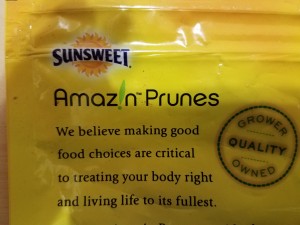What a bad cup of coffee can teach you
Do you always start your day with a extra-big mugful of coffee like I do? If so, you’ll appreciate just how terrible it is to start your day with a bad cup of coffee. A cup of coffee that lacks the delicious aroma of perfectly roasted coffee beans. A cup of coffee that just tastes awful.
A bad cup of coffee just gets your day off to a bad start, and for that I blame myself. You see, I had just finished a package of coffee and needed a replacement ASAP (it is a DEFCON 5 situation around here if there is no coffee). Normally, I buy my coffee at Trader Joe’s but I had forgotten to do so during my weekly shopping trip. And so I found myself shopping in a gourmet store for something else, and thought I would pick up a brand of coffee that I enjoy (and for which I am willing to pay a little extra). Apparently, this store no longer carries that brand. They did have another brand that I have tried in the past, but I didn’t feel like paying the gourmet store price for it.
So I made a very big mistake: I grabbed a bag of coffee simply because it was cheap. It was not a brand I knew or recognized or had even seen before, but I figured a bag of medium roast Costa Rican coffee from a gourmet store can’t be all that bad. Well, I figured wrong. It was the worst coffee I have ever bought in my life. It tasted horrible. It had no coffee aroma. It was so bad I actually threw what was left out.
Then I hustled over to Trader Joe’s and bought my go-to coffee. Now, my mornings are back to normal.
A bad cup of coffee taught me never to buy an unknown brand. And it’s really not about the cost. You can get very good yet cheap store-brand coffee like I do at Trader Joe’s or at stores like Target, where you trust the brand.
Brands are quite literally markers that serve to identify. They let you separate one product from all the others like it. Once you’ve experienced a brand, you can then look for it if you liked it or avoid it if you didn’t. Brands provide a shortcut that consumers can use to know what to buy quickly and without much research.
Remember this the next time you are out of coffee: Unless it’s a brand you know already, buying just anything based on price alone will get your morning started on the wrong foot.
Do you know what your brand stands for? Are you communicating it well enough? If not, perhaps you should invest in my new Brand Identity Kit. Check it out!



